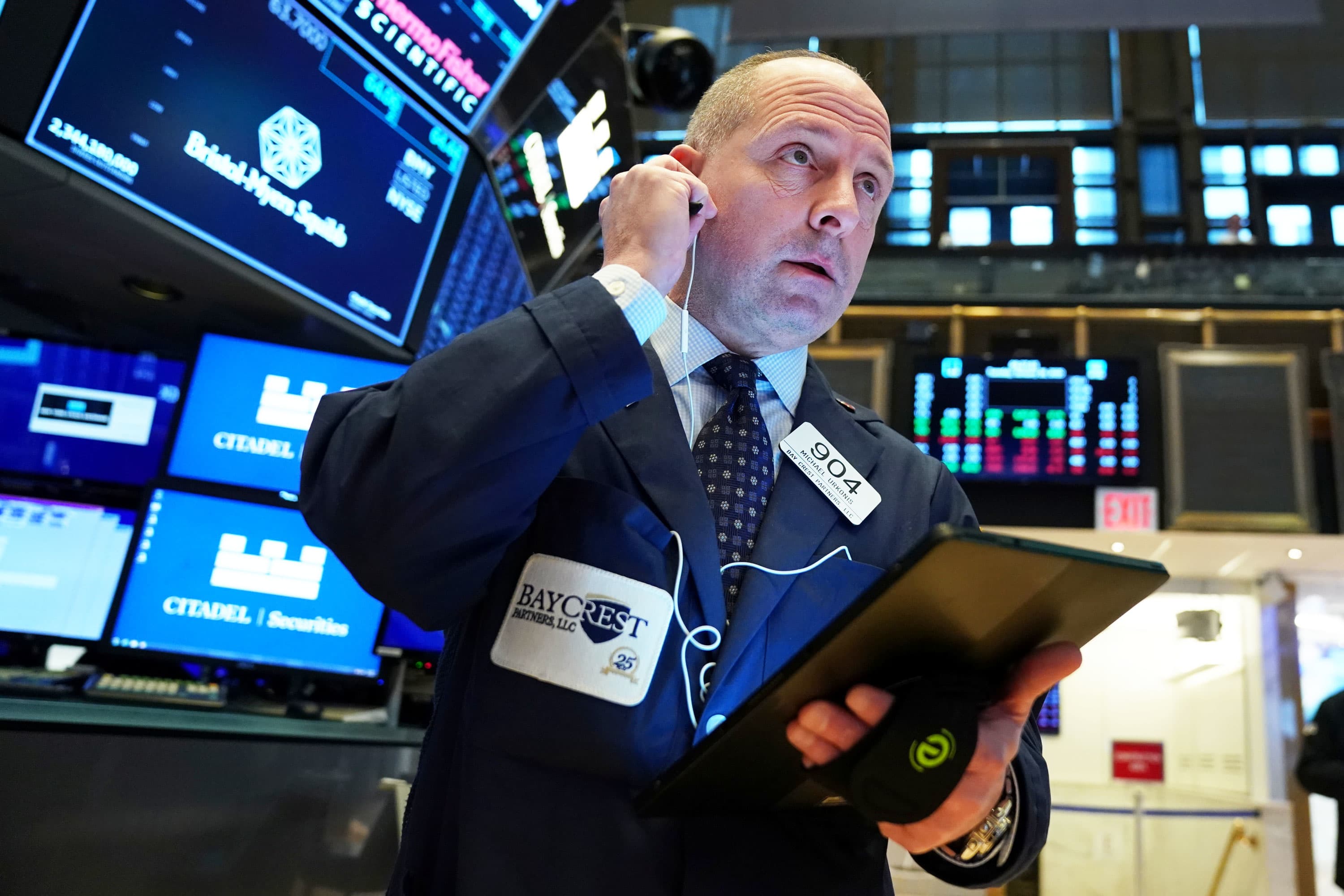Trader Michael Urkonis works on the floor of the New York Stock Exchange, January 28, 2020.
Bryan R Smith | Reuters
U.S. stock futures slipped on Sunday night after President Donald Trump signed several executive orders aimed at extending coronavirus relief.
Dow Jones Industrial Average dipped 55 points, or 0.2%. S&P 500 futures fell 0.2% and Nasdaq 100 futures were down by 0.4%.
Those orders continue the distribution of expanded unemployment benefits, defer student loan payments through 2020, extend a federal moratorium on evictions and provide a payroll tax holiday. However, the unemployment benefit will be continued at a reduced rate of $400 per week. Originally, the benefit provided workers impacted by the pandemic with $600 per week.
Trump’s moves come after congressional leaders failed to make progress on a new coronavirus stimulus package last week. Several benefits from a package signed earlier in the year lapsed at the end of July, raising uncertainty about the U.S. economy moving forward.
“The fiscal cliff still represents downside risk for August,” said Aneta Markowska, chief financial economist at Jefferies. Markowska added, however, any weakness from this will be “short-lived.”
“By September, another round of fiscal support will create positive momentum. The reopening of schools, even if only in some states, will reinforce the positive momentum by (1) boosting back-to-school shopping and (2) allowing more parents to return to work in September,” she said in a note to clients. “Bottom line, all the stars are lining up for another inflection point in activity and a second leg up in the reopening.”
Wall Street was coming off a strong weekly performance. The Dow rose 3.8% last week for its biggest weekly gain since June. The S&P 500 climbed 2.5% along with the Nasdaq Composite. Last week’s gains come during a historically tough time for the market as August kicks off the worst three-month stretch for the S&P 500.
Those gains were led in part by Facebook, Apple and Microsoft, all of which rose by more than 3% last week. They also left the S&P 500 just 1.2% below its Feb. 19 record high.
Subscribe to CNBC PRO for exclusive insights and analysis, and live business day programming from around the world.
